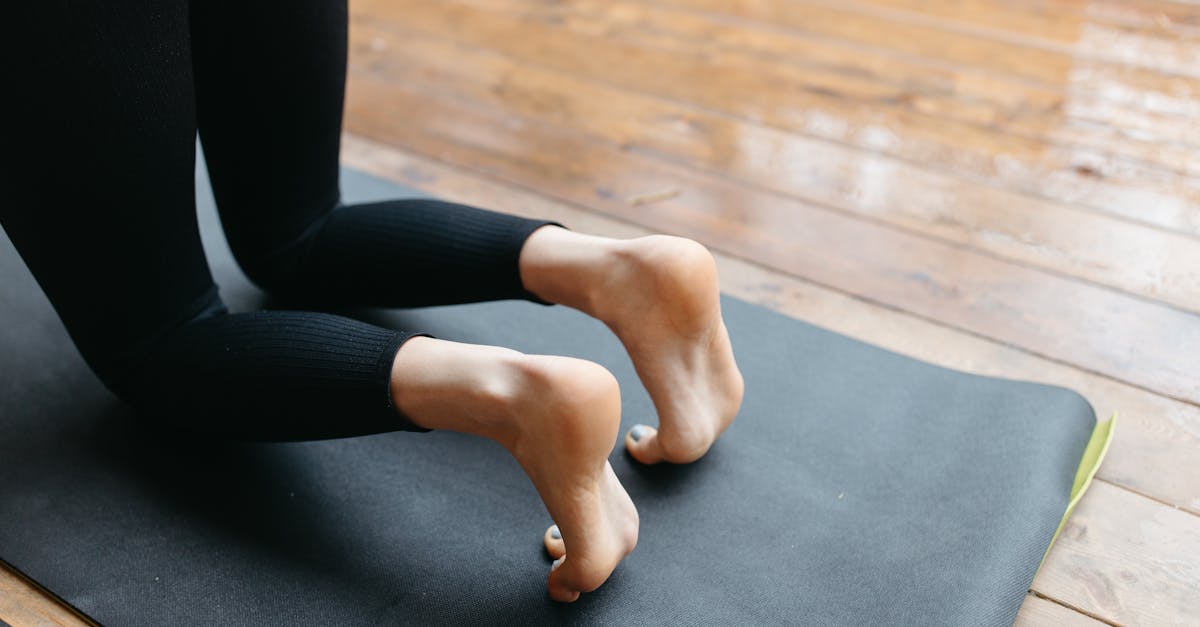|
In Short, Navigating Dizziness focuses on the relationship between posture and the sensation of dizziness, emphasizing how proper positioning can enhance stability and overall health. This approach helps alleviate symptoms by correcting misalignments in the body, leading to improved balance and reduced discomfort. By implementing simple adjustments and being mindful of your alignment throughout daily activities, individuals can experience significant benefits, including decreased muscle strain and enhanced well-being. Discover how these intuitive strategies can effectively mitigate dizziness while promoting a natural state of harmony in the body. |
Navigating dizziness can be challenging, especially when it is linked to poor posture and body positioning. Recognizing the connection between alignment and feelings of unsteadiness is crucial for managing symptoms. Simple adjustments, such as maintaining a neutral spine, ensuring proper head alignment, and incorporating regular stretches can significantly enhance overall stability. By being mindful of your posture throughout daily activities, from sleeping to sitting, you can mitigate discomfort and improve your well-being.

Welcome to Pulse Align, where we offer a gentle, non-invasive method designed to help individuals restore their body’s natural posture and balance through innovative light pulses. By fostering muscle tone symmetry, our approach can promote overall well-being, reduce tension, and enhance everyday comfort. Our focus is on guiding clients toward better positioning, which often results in a noticeable feeling of harmony within the body.
The Pulse Align Experience
At Pulse Align, we recognize that wellness is not just about addressing discomfort but about empowering clients to recalibrate their own bodies. Our methods encourage the body to rebalance naturally, often leading to improved posture and alleviating everyday tension. We create a supportive environment where clients can explore how better posture influences their overall well-being without the need for invasive measures.
Personalized Wellness Journey
Our client-centric approach places great emphasis on understanding individual needs, resulting in meaningful experiences. Many clients have shared their uplifting stories about how our gentle techniques helped them enhance their posture, reduce feelings of discomfort, and enjoy greater ease in their daily activities. The feedback we receive showcases the positive impact our unique services can have, reinforcing the idea that wellness can be accessible and supportive.
Explore Your Path to Wellness
We invite you to visit our Pulse Align website to learn more about our safe, non-invasive, and family-friendly approach. No matter where you are, from La Prairie to Mont-Royal to Terrebonne, we have locations ready to assist you. Appointments can be easily booked online, allowing you to embark on your wellness journey today. Remember, Pulse Align complements your current wellness routine and is a valuable addition to your self-care practices.
By prioritizing your well-being and embracing a path toward better balance, you can experience the benefits of improved muscle tone symmetry and enhanced posture. Discover how Pulse Align’s innovative approach can support you and your family on your journey to wellness.
Medical Disclaimer
The information provided on this site does not replace the advice of your healthcare team. Always consult your healthcare provider for medical questions and concerns. Pulse Align complements but does not replace, medical care.
- Stay Aware: Regularly assess your body’s alignment throughout the day.
- Head Position: Avoid forward head posture to alleviate neck strain.
- Ergonomic Setup: Adjust your workspace to promote proper posture.
- Supportive Sleep: Use a pillow that keeps your neck aligned while sleeping.
- Regular Movement: Take breaks to stretch and realign your body.
- Deep Breathing: Engage in deep breathing exercises to enhance relaxation.
- Physical Therapy: Consult professionals for personalized alignment strategies.
- Postural Exercises: Strengthen your back and neck muscles to support posture.

Dizziness can be a debilitating symptom that often stems from poor posture and misalignment in the body. Correcting your posture and being mindful of your positioning throughout the day can greatly enhance your overall balance and reduce feelings of dizziness. This article explores practical tips for improving your posture during various daily activities, ultimately promoting wellness and stability in your life.
Understanding the Link Between Posture and Dizziness
The human body is designed to work in harmony, with every muscle and bone playing a role in maintaining balance. Bad posture can disrupt this equilibrium, leading to various health issues, including dizziness. Poor positioning, especially forward head posture, can impose excess strain on neck muscles, triggering discomfort that manifests as dizziness. Recognizing the connection between your alignment and wellness is the first step in mitigating symptoms.
Assessing Your Daily Activities
Take a moment to evaluate your daily habits. Pay attention to how you sit, stand, sleep, and engage in leisure activities. Are your shoulders rounded? Is your head leaning forward? Identify habits that could be contributing to your discomfort. By becoming more aware of your body’s alignment, you can make necessary adjustments to improve your posture.
Practical Tips for Posture Correction
Sleeping Position Adjustments
Your sleeping position has a significant impact on your posture. Consider the following tips to promote an optimal alignment:
- Use supportive pillows: Choose a pillow that keeps your neck in a neutral position.
- Maintain spinal alignment: When sleeping on your back, a thin pillow can help preserve the natural curve of your neck.
- Avoid stomach sleeping: This position often creates excessive strain on both the neck and spine, exacerbating discomfort.
Improving Posture While Sitting
Long periods of sitting can lead to poor posture and subsequent dizziness. To enhance your alignment while seated:
- Sit up straight: Ensure that your back remains straight and your shoulders are relaxed. Head should be aligned with your spine and not jutting forward.
- Utilize ergonomic furniture: Make use of chairs that offer lumbar support and keep your feet flat on the ground.
- Take regular breaks: Stand up, stretch, or walk briefly every hour to improve circulation and relieve tension in your muscles.
Practicing Mindful Movements
Incorporate mindful movements throughout your day. Simple exercises that focus on core strength and flexibility can significantly improve your posture.
- Engage in stretches: Stretch your neck and back regularly to release tension and prevent stiffness.
- Practice deep breathing: This promotes relaxation and improves oxygen flow, fostering better body alignment.
- Be conscious when using mobile devices: Hold screens at eye level to avoid forward head posture, which can contribute to dizziness.
Incorporating a Holistic Approach to Wellness
Recognizing the integral relationship between your posture and your overall health is essential in reducing dizziness. At Pulse Align, the focus is not solely on addressing specific discomforts but rather on recalibrating the body to achieve balance. Implementing the posture adjustments outlined above, combined with a holistic approach that enhances neuromuscular health, empowers you to take charge of your wellness. Embrace this journey of self-awareness and positive change, fostering a healthier, more balanced life.
| Postural Issue | Wellness Strategy |
|---|---|
| Poor Sleeping Position | Ensure proper alignment of your head and neck using a supportive pillow. |
| Forward Head Posture | Practice mindfulness to maintain chin retraction and shoulder alignment while sitting. |
| Slouching While Sitting | Use ergonomically designed seating to promote natural body curvature. |
| Lying Down with Neck Strain | Relax your neck and shoulders through gentle stretching before bed. |
| Head Position During Screen Use | Keep screens eye-level to minimize neck strain and ensure natural posture. |
| Extensive Standing | Shift weight between legs and use anti-fatigue mats for added comfort. |
| Use of Mobile Devices | Hold devices at eye level to align your head and reduce tension. |
| Daily Movement Restrictions | Incorporate stretches and frequent position changes to boost circulation. |
| Seated Relaxation Techniques | Support your lower back and practice balanced breathing to maintain comfort. |
| Cervical Misalignment Risks | Engage in posture awareness activities to promote better alignment naturally. |

Your Wellness Journey: Transformative Experiences at Pulse Align
“Since starting my sessions at Pulse Align, I’ve noticed significant improvements in my overall well-being. As someone who has struggled with persistent dizziness, I found that the gentle pulse technology helped me recalibrate my body. I feel more balanced and less dizzy throughout the day.” – Emily from Mont-Royal
“I never realized the connection between my poor posture and the dizziness I was experiencing until I came to Pulse Align. The staff took the time to explain how aligning my body could lead to reducing these symptoms. After just a few sessions, I was amazed at how much better I felt naturally.” – Robert from La Prairie
“Living in Châteauguay, I sought help for my persistent dizziness and discovered Pulse Align. Their approach not only focused on my symptoms but also helped me understand the importance of posture. The improvements I experienced were incredible, and I am grateful for the balance I regained.” – Sarah
“In Deux-Montagnes, I found that my experience at Pulse Align was life-changing. The personalized attention and emphasis on natural healing allowed me to tune into my body and make adjustments that truly improved my posture. It has made a world of difference in managing my dizziness.” – Marc
“I feel fortunate to have Pulse Align as part of my wellness journey. The support for my body’s natural ability to recalibrate has been invaluable. The results of the treatments have led me to realize that I’m not just managing my symptoms but actively restoring balance in my life.” – Anna from Saint-Jérôme
Pulse Align works closely alongside healthcare teams to ensure that clients and their families have the support they need throughout their wellness journey. For those in search of improvements in body function and overall well-being, our services can help foster essential changes.
For more information or to find a nearby clinic dedicated to enhancing wellness, visit Our Clinics and discover the positive transformations awaiting you at Pulse Align.
Dizziness is a common yet often overlooked symptom that many individuals encounter, yet few fully understand its underlying causes. At the forefront of addressing this issue is Dr. Sylvain Desforges, an esteemed expert in osteopathy, naturopathy, and manual medicine. As the founding president of both TAGMED clinics and the ACMA association, Dr. Desforges has dedicated his career to innovating within the healthcare field, specifically focusing on managing chronic pain and enhancing patient outcomes.
One of the principal areas Dr. Desforges emphasizes is the profound connection between posture and dizziness. Poor alignment, particularly in the neck and spine, can lead to a variety of symptoms, including vertigo and lightheadedness. His approach revolves around the understanding that the human body requires proper alignment to function optimally, and that misalignments can trigger a cascade of health issues.
Dr. Desforges’ clinics utilize advanced technologies such as spinal decompression, laser therapy, and shockwave therapy. These methods are non-invasive and focus on alleviating pressure in the spinal column, which can greatly contribute to relieving dizziness associated with postural misalignment. By creating space between vertebrae, these therapies enhance fluid circulation, reduce inflammation, and promote the body’s natural healing processes.
In addition to these cutting-edge technologies, Dr. Desforges prioritizes providing evidence-based care. He believes that implementing a combination of traditional and modern healthcare practices enhances the overall well-being of his patients. His philosophy is grounded in treating the whole person, rather than merely addressing individual symptoms. This holistic view enables patients to achieve long-term improvements in their health.
One common factor contributing to dizziness is the tendency for individuals to adopt poor posture during daily activities. Dr. Desforges stresses the importance of self-awareness regarding body alignment. Engaging in posture checks throughout the day can help individuals identify when they are slipping into less-than-ideal positions. Whether sitting at a desk or sleeping at night, ensuring that the head, neck, and spine are aligned can lead to significant improvements in overall health.
In the city of Montreal, where Dr. Desforges’ clinics are situated, many individuals have found relief from their dizziness symptoms through his innovative methods. Patient testimonials highlight the positive shifts in their quality of life after receiving treatment. They often report not only reduced instances of dizziness but also a noticeable decline in neck and back discomfort, allowing them to engage more fully in their daily routines.
Furthermore, Dr. Desforges actively collaborates with other healthcare professionals to ensure his patients receive a comprehensive care plan. This collaborative approach is essential in creating individualized strategies to manage dizziness and its causes effectively. By working alongside professionals in related fields, Dr. Desforges aims to provide each patient with a tailored and supportive wellness journey.
Ultimately, navigating dizziness requires a combination of awareness, proper body alignment, and access to advanced therapeutic interventions. The work of Dr. Sylvain Desforges exemplifies the potential for innovative healthcare solutions to transform the lives of those struggling with dizziness caused by postural issues. His commitment to enhancing patient well-being through holistic, evidence-based care sets a benchmark in the field of chronic pain management and offers hope for improved health for individuals across Montreal, Terrebonne, and Mont-Royal.
Neurovertebral Decompression Technology by TAGMED
Mechanism of Action
The neurovertebral decompression technology utilized by TAGMED functions by applying controlled and progressive traction forces to the spinal column. This innovative method is designed to increase the space between the vertebrae, effectively relieving pressure on intervertebral discs and nerve roots. By allowing for this increased spacing, the approach improves fluid circulation in the targeted area, which is essential for nourishing the spinal structures. As a result, this process not only helps in reducing inflammation but also plays a pivotal role in relieving pain, providing a holistic approach to spinal health.
Specific Benefits
This non-invasive method is particularly efficient in alleviating chronic pain and symptoms associated with various spinal conditions, including disc herniation, disc bulging, and moderate to severe spinal or foraminal stenosis. By mitigating the pressure exerted on neural structures, neurovertebral decompression optimizes fluid circulation around the discs, which significantly enhances recovery rates. Patients frequently report improvements in their overall quality of life due to the reduction of chronic pain and the restoration of functional mobility.
Comparison with Other Treatments
When comparing TAGMED’s neurovertebral decompression technology to other commonly employed therapeutic approaches—such as analgesics, corticosteroid injections, surgery, or traditional physiotherapy—its unique advantages become clear. Unlike surgical interventions that can pose significant risks and necessitate lengthy recovery periods, this technique is non-invasive, resulting in a much lower risk profile. Additionally, patients often experience faster recovery times, reducing their reliance on medications and minimizing potential side effects associated with pharmacological treatments.
Case Studies or Testimonials
Numerous patient testimonials highlight the effectiveness of TAGMED’s neurovertebral decompression. For example, several individuals have reported lasting reductions in their chronic pain levels, enabling them to resume their daily activities more swiftly. These accounts not only accentuate the notable improvements in pain management but also illustrate a decreased dependence on pharmacological solutions. One patient noted, “After starting the neurovertebral decompression therapy, I experienced a significant reduction in my pain and was able to return to my normal routine much quicker than anticipated.” Such testimonials showcase how this approach contributes to meaningful, sustainable improvements in patients’ lives, reinforcing the notion that TAGMED’s technology offers a valuable alternative for addressing chronic pain and related conditions.
Managing dizziness can be a daunting journey for many individuals, often rooted in bad posture and misalignment. By recognizing the essential connection between posture and the sensation of dizziness, individuals can take proactive steps towards improvement. Simple yet effective adjustments in daily positioning create substantial changes in one’s overall well-being.
Adopting an awareness of body alignment is the first step toward alleviating discomfort. Regular posture checks throughout the day can serve as a reminder to maintain proper alignment while sitting, standing, or even lying down. For example, avoiding a forward head posture and ensuring that the shoulders are relaxed can significantly reduce strain on the neck muscles, consequently minimizing tension headaches and dizziness.
Furthermore, adjusting sleeping positions is crucial for individuals who frequently wake up feeling unsteady. Utilizing a supportive pillow to maintain the neck’s natural curve while sleeping can play a vital role in enhancing spinal alignment and preventing related symptoms. Incorporating ergonomic furniture in the workspace also promotes better posture, effectively reducing discomfort during extended periods of sitting.
Incorporating regular movement breaks and stretching into daily routines is equally beneficial. These practices not only enhance circulation but also strengthen the muscles that support proper posture. By cultivating a mindful lifestyle that prioritizes postural awareness, individuals can create a robust foundation for improved balance and reduced instances of dizziness.
Ultimately, navigating the challenges of dizziness is about recognizing the impact of posture and taking tangible steps toward meaningful change. With consistency and a commitment to alignment, individuals can reclaim their stability and enhance their quality of life.

Do you suffer from a chronic condition that responds little or not at all to conservative treatments?
Pulse Align offers an innovative, non-invasive method designed to help individuals restore their natural balance and posture through gentle, imperceptible pulses. This gentle approach supports the body’s intrinsic abilities to recalibrate muscle tone and enhance overall well-being. By promoting muscle tone symmetry, Pulse Align is a holistic solution that aids in alleviating discomfort often related to misalignments in posture, quietly inviting a sense of relief and balance into everyday life.
At Pulse Align, the emphasis is not on targeting discomforts or conditions directly. Instead, this approach fosters the body’s natural recalibration process. Clients often experience amazing improvements in comfort and posture, as their bodies find their equilibrium through this supportive method. By focusing on enhancing alignment, individuals may notice a remarkable reduction in feelings of tension, creating an environment for improved well-being.
Our personalized approach at Pulse Align is evident through the heartfelt testimonials shared by clients who have embraced this journey toward balance. Many have expressed notable enhancements in their overall wellness, including reductions in tension throughout their neck and back areas, and an increased sense of vitality. Clients value the supportive and empathetic atmosphere that fosters a journey of self-discovery and enhancement, where improvements are viewed as part of a broader journey of wellness.
We invite you to explore our services at Pulse Align by visiting our website, where you can learn more about our innovative offerings, locate nearby clinics in cities like La Prairie, Mont-Royal, Terrebonne, and others, and easily book a consultation for yourself or your family. Remember, Pulse Align is designed to complement your existing healthcare services, ensuring that your path to wellness is comprehensive and supportive, rather than replacing any necessary care.
To learn more about our services and book an appointment, visit our website: Pulse Align. Experience the safe, non-invasive, and family-friendly approach that Pulse Align offers, and take the first step toward improved posture and well-being today.
Frequently Asked Questions
Vértigo
Does anxiety worsen vertigo?
Yes, fear of vertigo can create a vicious cycle, increasing anxiety and instability.
La caféine aggrave-t-elle la maladie de Ménière ?
Réduire la caféine, le sel et l’alcool est souvent recommandé pour mieux gérer les symptômes de la maladie de Ménière.
La méditation ou le yoga aident-ils à réduire les vertiges ?
Ils peuvent réduire le stress et améliorer la proprioception, aidant ainsi indirectement à mieux gérer les vertiges.
Une perte auditive soudaine avec vertiges est-elle grave ?
Cela peut indiquer un problème de l’oreille interne, comme la maladie de Ménière ou une labyrintite. Une consultation médicale est nécessaire.
Les infections de l’oreille peuvent-elles provoquer des vertiges ?
Oui, une infection ou une inflammation de l’oreille interne (névrite vestibulaire) peut provoquer des vertiges soudains et intenses.
¿La enfermedad de Ménière es crónica?
Sí, es una enfermedad crónica que evoluciona por crisis, con periodos de remisión y recaídas.
Une carence en vitamine B12 peut-elle causer des vertiges ?
Une carence sévère peut entraîner divers symptômes neurologiques, dont des étourdissements, mais c’est moins fréquent.
Les médicaments contre l’hypertension causent-ils des vertiges ?
Certains antihypertenseurs peuvent faire baisser la pression, entraînant des étourdissements, surtout en se levant rapidement.
Does poor vision affect vertigo?
Poorly corrected vision can disrupt sensory input, contributing to imbalance.
Is surgery necessary?
Rarely. Surgery may be considered for certain inner ear conditions if other treatments fail.
Zoé Rousseau believes that knowledge is the most powerful step toward healing—and she’s here to illuminate the path forward for anyone facing the challenges of vertigo. At Pulse Align, Zoé not only highlights the latest breakthroughs in neuromodulation and non-invasive health technologies but also translates complex research into practical, everyday guidance. Her approach is grounded in empathy and fueled by a genuine drive to help readers find balance, both literally and figuratively. From exploring advanced treatments to sharing firsthand patient stories, Zoé’s heartfelt advocacy ensures that no one has to face the spinning world of vertigo alone.
Medical Disclaimer
The information and advice provided on this site do not replace the advice, diagnosis, or treatment of a healthcare professional. Please note that the author of this article is neither a doctor nor a specialist in a medical specialty as defined by the Collège des médecins du Québec. Manual medicine, functional medicine, and sports medicine as described on this site exclude any medical treatment or diagnosis made by a doctor or medical specialist. Always consult your doctor for any medical questions. For more details, please read our complete Legal Notice.




